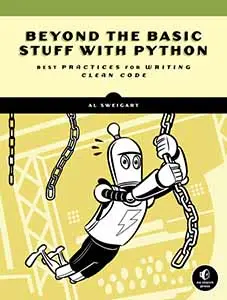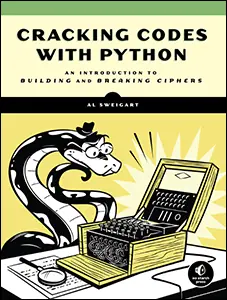








A number’s factors are any two other numbers that, when multiplied with each other, produce the number. For example, 2 × 13 = 26, so 2 and 13 are factors of 26. Also, 1 × 26 = 26, so 1 and 26 are also factors of 26. Therefore, we say that 26 has four factors: 1, 2, 13, and 26.
If a number only has two factors (1 and itself), we call that a prime number. Otherwise, we call it a composite number. Use the factor finder to discover some new prime numbers! (Hint: Prime numbers always end with an odd number that isn’t 5.) You can also have the computer calculate them with Project 56, “Prime Numbers.”
The math for this program isn’t too heavy, making it an ideal project for beginners.
When you run factorfinder.py, the output will look like this:
Factor Finder, by Al Sweigart [email protected]
--snip--
Enter a number to factor (or "QUIT" to quit):
> 26
1, 2, 13, 26
Enter a number to factor (or "QUIT" to quit):
> 4352784
1, 2, 3, 4, 6, 8, 12, 16, 24, 29, 48, 53, 58, 59, 87, 106, 116, 118, 159, 174, 177, 212, 232, 236, 318, 348, 354, 424, 464, 472, 636, 696, 708, 848, 944, 1272, 1392, 1416, 1537, 1711, 2544, 2832, 3074, 3127, 3422, 4611, 5133, 6148, 6254, 6844, 9222, 9381, 10266, 12296, 12508, 13688, 18444, 18762, 20532, 24592, 25016, 27376, 36888, 37524, 41064, 50032, 73776, 75048, 82128, 90683, 150096, 181366, 272049, 362732, 544098, 725464, 1088196, 1450928, 2176392, 4352784
Enter a number to factor (or "QUIT" to quit):
> 9787
1, 9787
Enter a number to factor (or "QUIT" to quit):
> quitWe can tell if a number is a factor of another number by checking if the second number evenly divides the first number. For example, 7 is a factor of 21 because 21 ÷ 7 is 3. This also gives us another of 21’s factors: 3. However, 8 is not a factor of 21 because 21 ÷ 8 = 2.625. The fractional remainder component tells us this equation did not divide evenly.
The % mod operator will perform division and tell us if there’s a remainder: 21 % 7 evaluates to 0, meaning there is no remainder and 7 is a factor of 21, whereas 21 % 8 evaluates to 1, a nonzero value, meaning that it isn’t a factor. The factor finder program uses this technique on line 35 to determine which numbers are factors.
The math.sqrt() function returns the square root of the number passed to it. For example, math.sqrt(25) returns 5.0 because 5 times itself is 25, making it the square root of 25.
1. """Factor Finder, by Al Sweigart [email protected]
2. Finds all the factors of a number.
3. View this code at https://nostarch.com/big-book-small-python-projects
4. Tags: tiny, beginner, math"""
5.
6. import math, sys
7.
8. print('''Factor Finder, by Al Sweigart [email protected]
9.
10. A number's factors are two numbers that, when multiplied with each
11. other, produce the number. For example, 2 x 13 = 26, so 2 and 13 are
12. factors of 26. 1 x 26 = 26, so 1 and 26 are also factors of 26. We
13. say that 26 has four factors: 1, 2, 13, and 26.
14.
15. If a number only has two factors (1 and itself), we call that a prime
16. number. Otherwise, we call it a composite number.
17.
18. Can you discover some prime numbers?
19. ''')
20.
21. while True: # Main program loop.
22. print('Enter a positive whole number to factor (or QUIT):')
23. response = input('> ')
24. if response.upper() == 'QUIT':
25. sys.exit()
26.
27. if not (response.isdecimal() and int(response) > 0):
28. continue
29. number = int(response)
30.
31. factors = []
32.
33. # Find the factors of number:
34. for i in range(1, int(math.sqrt(number)) + 1):
35. if number % i == 0: # If there's no remainder, it is a factor.
36. factors.append(i)
37. factors.append(number // i)
38.
39. # Convert to a set to get rid of duplicate factors:
40. factors = list(set(factors))
41. factors.sort()
42.
43. # Display the results:
44. for i, factor in enumerate(factors):
45. factors[i] = str(factor)
46. print(', '.join(factors))Try to find the answers to the following questions. Experiment with some modifications to the code and rerun the program to see what effect the changes have.
factors.append(i) on line 36?factors = list(set(factors)) on line 40? (Hint: Enter a square number such as 25 or 36 or 49.)factors.sort() on line 41?factors = [] on line 31 to factors = ''?factors = [] on line 31 to factors = [-42]?factors = [] on line 31 to factors = ['hello']?